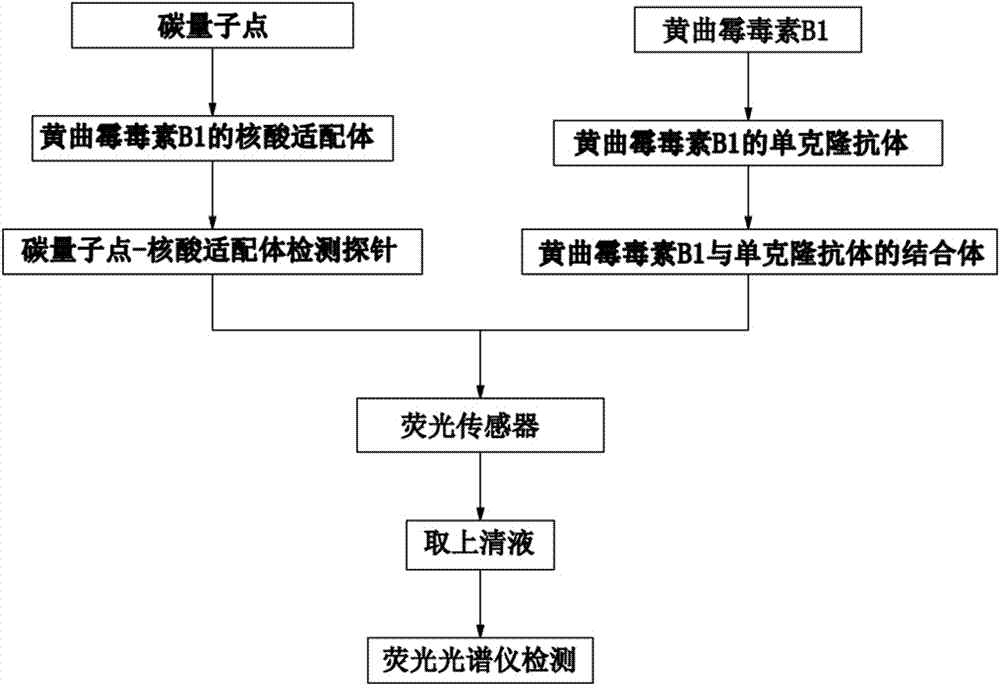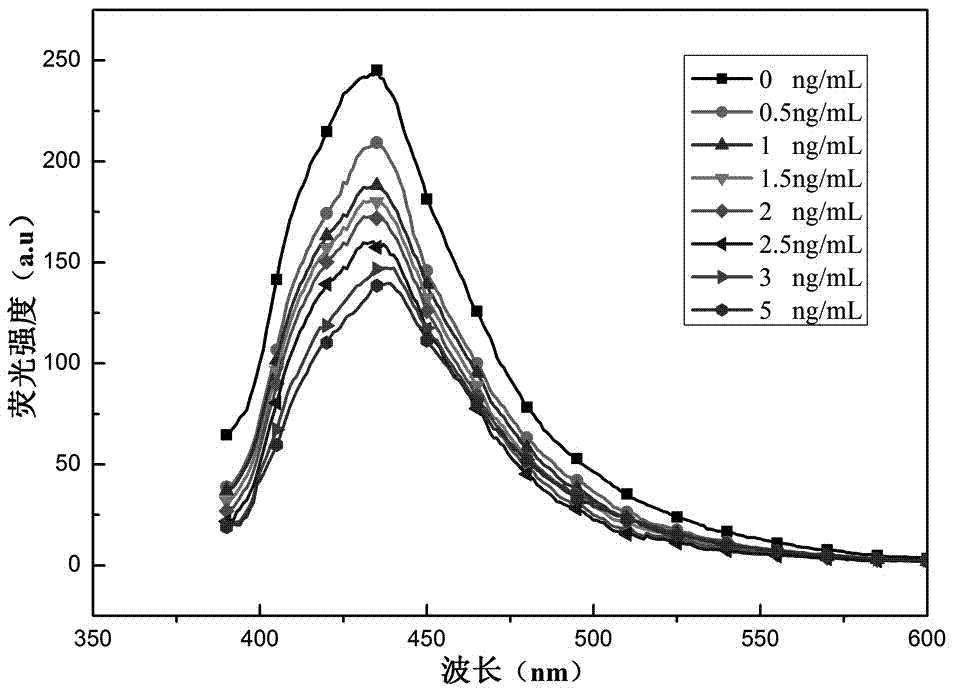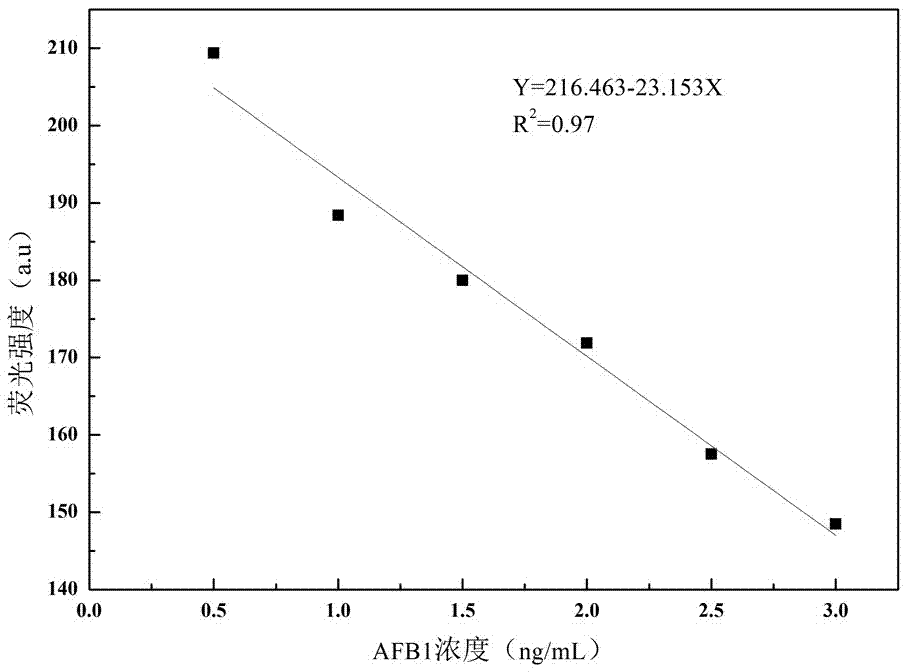Fluorescence sensor as well as preparation method and application thereof
A fluorescent sensor and hydrogen bonding technology, applied in the field of biosensors, can solve the problems of complex pretreatment, long detection cycle, poor reproducibility, etc., and achieve the effects of good water solubility, simple detection method, and low toxicity
- Summary
- Abstract
- Description
- Claims
- Application Information
AI Technical Summary
Problems solved by technology
Method used
Image
Examples
Embodiment 1
[0040] A fluorescent sensor, the fluorescent sensor is a sandwich structure, with carbon quantum dots as the fluorescent material; the upper part of the sandwich structure is the nucleic acid aptamer of the target, the middle part of the sandwich structure is the target, and the sandwich structure The lower part is the monoclonal antibody of the target object, the nucleic acid aptamer of the target object is modified with sulfhydryl groups, and the carbon quantum dots are bound to the nucleic acid aptamer of the target object through hydrogen bonding.
Embodiment 2
[0042] Taking the target object as aflatoxin B1 as an example, the target object of the present invention is not limited to aflatoxin B1.
[0043] A preparation method of a fluorescent sensor comprises the following steps:
[0044] Step 1: Preparation of carbon quantum dot-nucleic acid aptamer detection probe
[0045] 1) According to the volume ratio of glucose aqueous solution and NaOH solution as 1:1, mix 10mL, 1mol / L glucose aqueous solution with 10mL, 1.5mol / L NaOH solution, and sonicate for 4h under 400w ultrasonic power; adjust the pH of the mixture to 7. Add 100ml of absolute ethanol dropwise and stir, then add magnesium sulfate with a mass fraction of 12%, and stir for 20 minutes to obtain a carbon quantum dot solution, store it for 24 hours, and set aside. The particle size of the carbon quantum dots in the carbon quantum dot solution is 4~5nm.
[0046] Carbon quantum dots are an environmentally friendly fluorescent material. Compared with other fluorescent material...
Embodiment 3
[0057] An application of a fluorescent sensor in the quantitative detection of toxins, taking the detection of aflatoxin B1 as an example, but the present invention is not limited to the detection of aflatoxin B1, and the detection method includes the following steps:
[0058] Step 1: Prepare aflatoxin B1 test solution
[0059] 1) Preparation of aflatoxin B1 mother solution
[0060] First, dissolve 1 mg of aflatoxin B1 standard substance in 1 mL of methanol-PBS (where the mass fraction of methanol is 10%) solution to obtain solution A, and the concentration of solution A is C A =1mg / mL;
[0061] Take 1 μl of solution A and add methanol-PBS (the mass fraction of methanol is 10%) solution to dilute to 100mL of solution B, the concentration of solution B is C B =10ng / mL, 100mL, 10ng / mL of aflatoxin B1 mother solution.
[0062] 2) Dilute the aflatoxin B1 mother solution to obtain different concentrations of aflatoxin B1 test solution
[0063] Take 10 μL of aflatoxin B1 mother ...
PUM
| Property | Measurement | Unit |
|---|---|---|
| particle diameter | aaaaa | aaaaa |
| electrical resistance | aaaaa | aaaaa |
Abstract
Description
Claims
Application Information
 Login to View More
Login to View More - R&D
- Intellectual Property
- Life Sciences
- Materials
- Tech Scout
- Unparalleled Data Quality
- Higher Quality Content
- 60% Fewer Hallucinations
Browse by: Latest US Patents, China's latest patents, Technical Efficacy Thesaurus, Application Domain, Technology Topic, Popular Technical Reports.
© 2025 PatSnap. All rights reserved.Legal|Privacy policy|Modern Slavery Act Transparency Statement|Sitemap|About US| Contact US: help@patsnap.com



